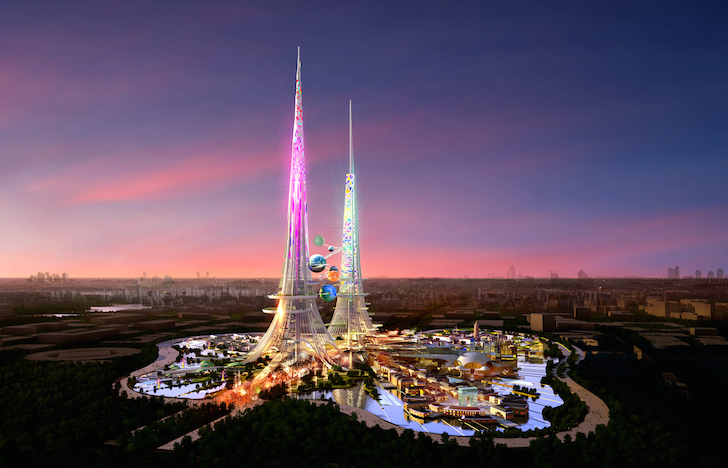July 4, 2014 – Happy 4th of July to all my American readers. The great American experiment is 238 years young today. America has been a leading innovator, a beacon of technological progress. But it is not alone in demonstrating advancements in science and technology.
Today’s posting is about a much older civilization that continues to enjoy a renaissance in the 21st century that is making the entire world sit up and take notice. I’m talking about China of course, and nothing better illustrates just how innovative this country has become than the following story.
China has unveiled plans to erect, within the next three years, two new towers in Wuhan, a city on the Yangtze River (Chang Jiang), 689 kilometers (428 miles) west of Shanghai. If you are not familiar with Wuhan it is China’s ninth largest city with a population over 10 million, the capital of Hubei Province, and home to five universities and purportedly a thousand lakes and beautiful gardens.
It is the gardens and lakes that may be the inspiration for locating this pair of sustainable, pollution scrubbing towers, pink in colour and named Phoenix. The first tower, named Feng for the male Phoenix, will rise one kilometer (3,280 feet), a full 150 meters (almost 500 feet) higher than the Burj Khalifa, currently the world’s tallest building. The shorter second tower, the female Phoenix, Huang, will be no slouch in size and will feature a 100-storey green wall of plants, and a perforated facade that will be home to colonies of bats and insects. Both towers will feature bio-reactors at the base for waste recycling.
The towers will be made of steel with concrete cores. Cladding on Feng will be photovoltaic panels. Hydrogen fuel cells will be installed at the base of each tower and both will collect rainwater for recycling. The lower 100 stories of Feng will be habitable although the plan does not call for apartments or business offices. That’s because the main purpose of the towers is to be a centre for the application of environmental technologies. Beyond the photovoltaics, the towers will feature multiple filtration systems and a thermal chimney used to clean and cool the surrounding air. Wind turbines will be featured near the top of the tower spires. With all this power generating technology on board the towers will be energy self sufficient.
China is pushing the limits of architectural innovation. If all goes according to plan the two new towers, with their bases resembling the roots of mangrove trees, will make both an architectural and environmental statement to the entire planet. The project involves the British architectural firm, Chetwoods and China’s Hua Yan Group. Total cost for the project – $2 billion U.S.











